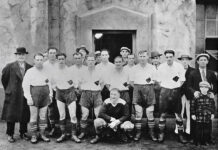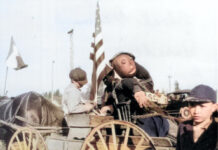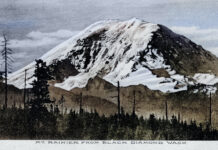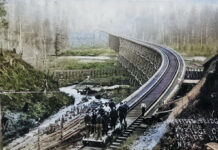Last week’s column highlighted the origins of the three primary styles of football played worldwide – soccer, rugby, and the football variants played in the U.S., Canada, and Australia. While football now dominates American sports culture, it wasn’t always this way, particularly in mining communities like Black Diamond with their large immigrant populations.
Black Diamond’s first waves of coal miners were heavily Welsh and English, reflecting the rich mining history of the British Isles. Jack Evans, who came from Wales to Black Diamond in 1910, is credited with organizing the first soccer team shortly thereafter. In fact, they won the Washington State Championships for the 1911-12 season. The teams were sponsored by the coal company, which took sporting excellence seriously. Paul Botts claimed, “If you were a good soccer player or baseball player, you had a job, whether you knew how to work or not.” Botts continues, “They imported Pete Dearden from Roslyn cause he was a good soccer player.”
While these days sporting equipment like balls and shoes are ubiquitous, back then, the boys in a coal mining town had to be inventive. Ed Banchero noted, “Heck, we didn’t have any balls. To play soccer, we would kick a can.” For shoe traction, they made their own cleats as Banchero explained, “Dad used to put more bloody hobnails on my shoes, that I could hardly lift them, but we still kicked it.”
Black Diamond’s team regularly traveled throughout the Puget Sound area, playing in the state’s top leagues. In 1941, the British battleship, HMS Warspite, was in port at Bremerton. Sailors from the ship played against various Washington teams but were shocked when the Black Diamond eleven soundly defeated them. Two years later, Italian prisoners of war held at Fort Lawton traveled by bus to Black Diamond and stayed in the homes of Italian families who greeted them with open arms. The two teams faced off Sunday, though it’s unclear which side won.
By the 1950s, soccer in America began to slowly die out, overpowered by the popularity of high school, college, and professional football. However, in the late 1960s, ad hoc soccer clubs and teams began forming. In 1967, only 100,000 people played soccer in the U.S., but that number grew to over 4 million by 1984. America’ soccer’s growth spurred FIFA to award the 1994 men’s World Cup to the United States, its first ever. The 1994 World Cup, hosted in nine American cities, drew record TV audiences and inspired the formation of Major League Soccer, which kicked off its first season in 1996. The men’s World Cup returns to the U.S. in 2026.
This photo of the Black Diamond soccer team, sponsored by Strain Coal Company, was taken in February 1940 at an unknown location. Kneeling from left to right: Tony Foglio, Herb Wells, Joe Romedo, Tom Hope (boy holding ball), Tom Zumek, K. O. Spaitig, Steve Androsko, and Frank Zumek.
Standing from left to right: Louie Zumek (with head bowed), Norman Hope, Frank Manowski, Jack Chilcott, Deno Mariotti, Ned Chilcott, Jack Hope, Emmett Brennan, Walt Sigmund, Phil Fowler, John Birchall.
This photo #2004.101.01, at an unknown location, comes courtesy of the Black Diamond Historical Society. Jackie Hope Jr., whose father was on the team, helped to identify the coaches and players.







